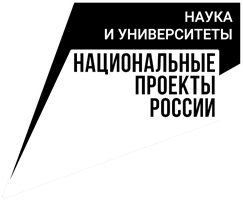 In October-December 2020, within the framework of the project «Mathematical Modeling, Analysis and Management of Complex Systems in Economics» of the Moscow Mathematical Center in cooperation with the International Institute for Applied Systems Analysis (IIASA; Austria), a series of lectures will be held on applied modeling problems and management of complex systems.
In October-December 2020, within the framework of the project «Mathematical Modeling, Analysis and Management of Complex Systems in Economics» of the Moscow Mathematical Center in cooperation with the International Institute for Applied Systems Analysis (IIASA; Austria), a series of lectures will be held on applied modeling problems and management of complex systems.
Lectures will be held on Tuesdays at 18:00 in the Zoom conference format.
December, 15
Applications of diffusion processes in multi-agent networks
About the lecturer
Åke Brännström |
Professor, Umea University, Sweden & Research Scholar, International Institute for Applied Systems Analysis (IIASA), Austria BIO: Professor Åke Brännström is an interdisciplinary mathematician at Umeå University, Sweden and Senior Research Scholar at the International Institute for Applied Systems Analysis, Austria. He has published more than fifty articles in peer-reviewed journals and organized more than a dozen international workshops and conferences. His contributions to theoretical ecology range from policy-oriented research to fundamental questions and supporting methodological developments. AREAS OF RESEARCH: Dynamics and evolution of complex adaptive systems and how such systems can be analyzed and understood mathematically. |
Spatial structure can decisively influence evolutionary processes. Several methods have been used to study evolution in spatial systems, including population genetics, quantitative genetics, moment-closure approximations, and individual-based models. In this talk, I will discuss how adaptive-dynamics techniques can be used to study eco-evolutionary models based on metapopulations and reaction-diffusion equations. Determining selection in spatially-structured populations can be tricky as a simple arithmetic average of local selection pressures usually gives the wrong answer. I will show how selection can be determined by a weighted average provided that the operator corresponding to the population dynamics is self-adjoint. I will illustrate how the result can be used to investigate evolution of resource competition in space. My presentation builds on joint work with Bernt Blasius, Sebiastian Dieh, Chris Klausmeier, Alexey Ryabov and Jonas Wickman.
Reference
J Wickman, S Diehl, B Blasius, CA Klausmeier, AB Ryabov, Å Brännström. Determining selection across heterogeneous landscapes: a perturbation-based method and its application to modeling evolution in space. The American Naturalist 189: 381-395
To participate in the event, you must register using the link below
https://us02web.zoom.us/meeting/register/tZIodOGupzwoGtX4BdIH5XvpTwrlfrUpbHWe

